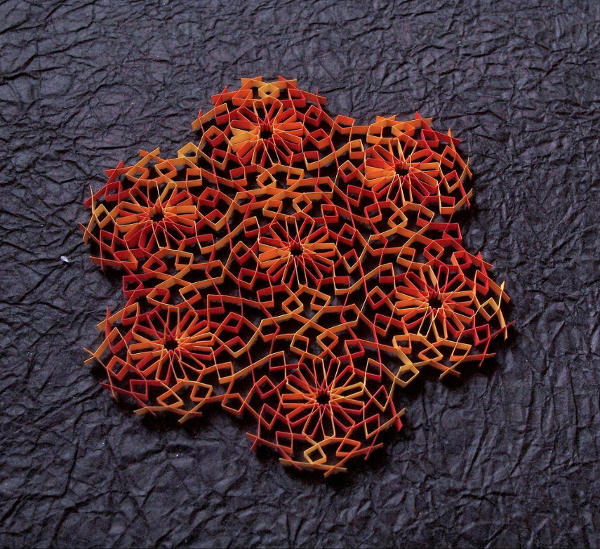The Coolest Thing I Bet You Didn’t Know Was Math (guest post by YQ L. ‘16) by Lydia K. '14, MEng '16
Clickbait title by me, not by YQ, because I really, really, really want you to see this. ![]()
Lydia here: some of my favorite things I’ve learned at MIT, from my friends as much as from my classes, have been things I wouldn’t expect to be math but which are, indeed, math. In particular, math includes many of the things we find beautiful—our very perception of beauty, actually—and the tools to make our own new beautiful things. This blog post is about one of my favorite things I didn’t realize were math: paper art. The rest of this post is by someone who, in addition to being an in general very talented and hardworking person, has made some incredible, beautiful things.
You saw some of these pieces in an earlier blog post. Each of them is a masterpiece. If you have the Internet for it, I strongly encourage you to click the ones you like to see the full-sized versions. You should also click the links. If you want to see more of YQ’s paper art, you can follow him on Flickr, Facebook, and Instagram. Enjoy!

Hi everyone! My name is YQ, and I’m one of Lydia’s friends from Random Hall. A few months ago, Lydia asked me, “do you want to write a guest post on your math art adventures at MIT?” What I thought I heard: “how many pretty pictures can you fit in a blog post?” The answer, it turns out, is a lot!
I’ve always been interested in making pretty geometric things. Some of this is hereditary—my multi-talented mom* taught me how to fold origami, do beading, knit, and crochet from a fairly young age, and I never stopped. My high school required everyone to do some form of self-directed research project, which I happily used as an excuse to fold geometric origami and build mathematical surfaces.
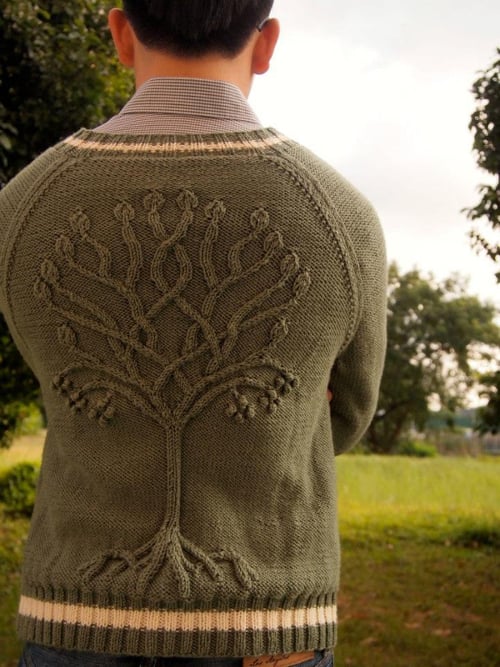
A cabled LOTR sweater my mom knit for me, as evidence of her awesomeness.
When I got to MIT, I was determined to carve out time for my art and not let it get subsumed by schoolwork and psets. This worked out really well… for freshman fall at least. Everyone should spend their P/NR semester folding origami!
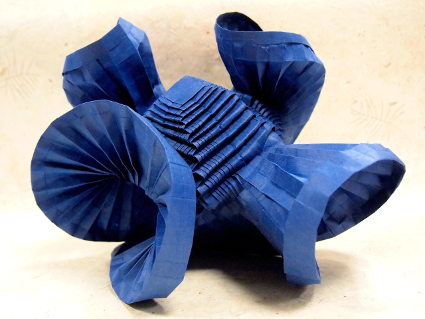
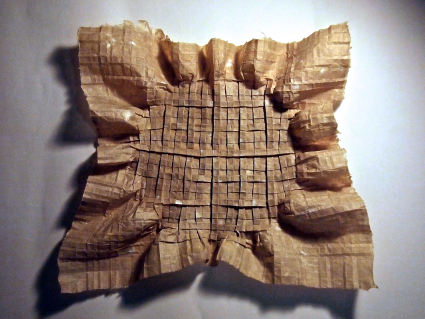
“Atlantis” and “Apple Pie”, two origami pleated designs I folded in my freshman year. These pieces only involve a fixed orthogonal grid of creases, but the tension in the paper creates curved and organic forms.
What helped me stay involved was being part of OrigaMIT, MIT’s paper folding club. MIT has a really cool and tight-knit community of origami enthusiasts, and we spend a lot of time folding together. Sometimes we make giant sculptures, like this Menger Sponge face!
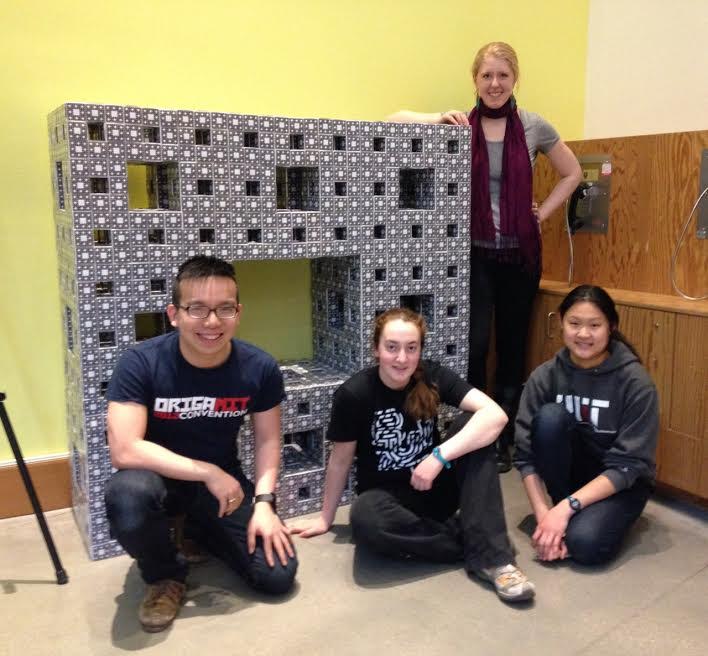
This sculpture model took 25,000 business cards and several months to assemble. This is a level 3 approximation of a mathematical fractal that has zero volume and infinite surface area. Clockwise from top: Laura H. ‘15, Zi-Ning C. ‘17, Or O. ‘18 and me. Fun fact: Jeannine Mosely, who first figured out how to build such a sculpture out of business cards, is an MIT alumna!
OrigaMIT has the privilege of hosting famous origami artists on campus! Last winter, ‘organic origami’ artist Vincent Floderer gave a talk and a workshop to a packed auditorium on how to crumple paper into organic shapes. More recently, Robert Lang, master of supercomplex origami, and Meenakshi Mukerji, prolific designer of modular origami, were our special guests at our annual convention in November. And of course, we have very accomplished origami artists within the club itself:
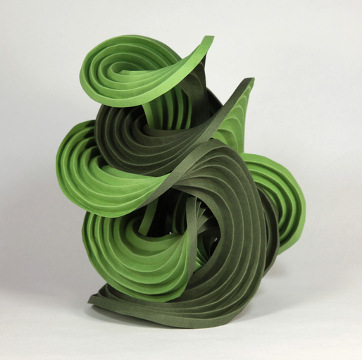
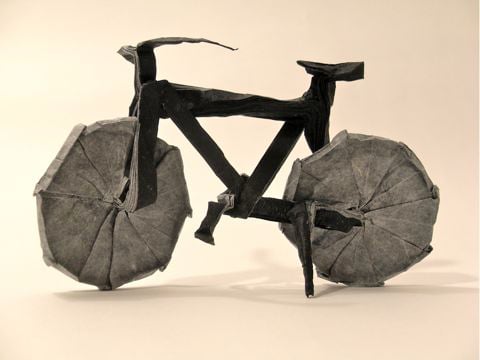
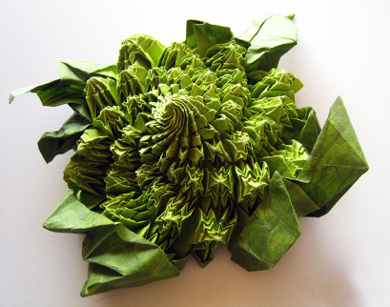
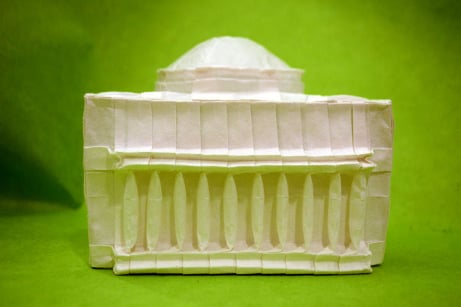
(first row, L-R:) Curved crease sculpture by Prof Erik Demaine, our faculty advisor. Bicycle by Jason K. ‘09, our graduate advisor. (second row, L-R:) Romanesco by Brian C. ‘02, OrigaMIT alumnus. Great Dome by Michelle F. ‘13, OrigaMIT alumna. Picture credit: the respective artists.
Every spring, we also organize a campus competition where students fold and submit models (self-designed or otherwise); these works make up an exhibition that gets displayed in the Student Center for a whole month. Here are some student submissions with a geometric flavor from last year’s exhibition:
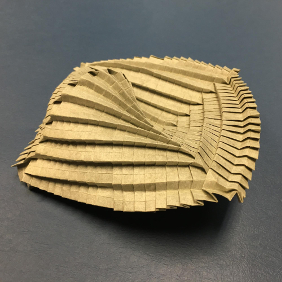
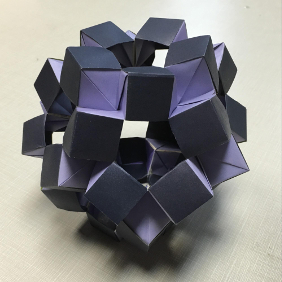
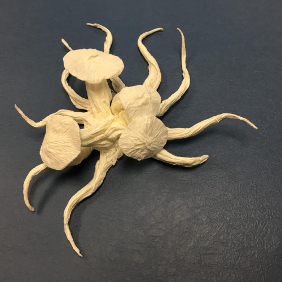
L-R: Organic Origami by Joe B. ‘18, forming curved organic forms out of orthogonal creases. Modular by Kimberly T. ‘15, a deceptive model that seems to form a dodecahedron out of cubes. Mushrooms with Roots by Ian C. ‘16, featuring “crumpling” techniques taught by Vincent Floderer in his workshop.
I feel incredibly lucky every day to be part of such an amazing and talented community.
Apart from origami, I’ve also been working on another type of art called paper strip sliceforms. You may know what paper sliceforms are—models you build by cutting out cross-sections in paper with slits and slotting them together.
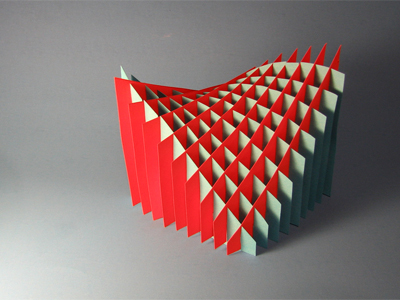
A conventional paper sliceform (picture credit: https://sculpturecourse.wordpress.com/2011/11/28/blank2/).
Strip sliceforms follow the same principle, but instead of forming strict cross-sections, the paper winds and bends in intricate ways throughout the design. I first learned about this type of artwork from fellow Flickr artist Christiane Bettens back in high school and was instantly captivated by the possibilities in this medium.
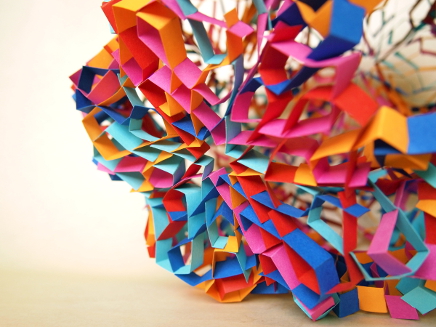
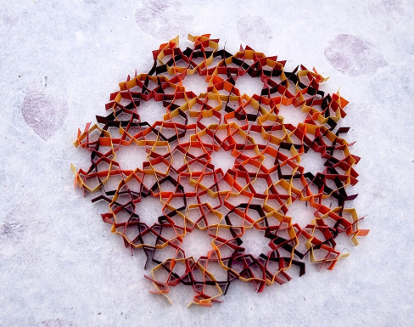
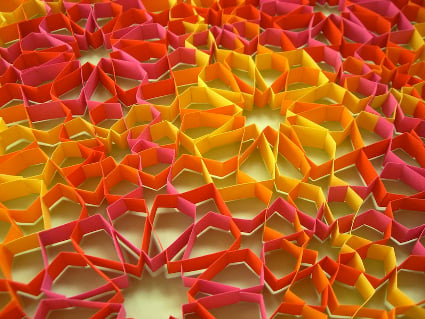
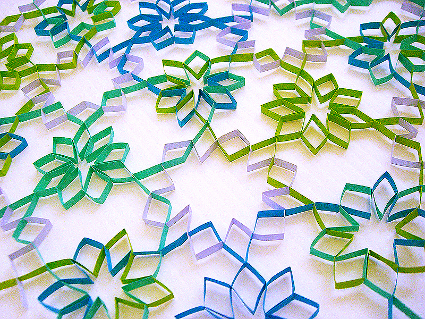
Early paper strip sliceforms I made: (first row, L-R): Iridescence, Girih I, (second row, L-R): Festival, Garden. This medium lends itself naturally to motifs common in Islamic star patterns.
As you can tell from the pictures, creating a simple strip sliceform piece at home is relatively simple. You don’t need any special tools—just construction paper, pencil, ruler, scissors, and a paper blade to measure and cut out the strips.
The only drawback is that if you want to create complicated designs, all the tracing and measuring by hand quickly gets pretty tedious and overwhelming. I was grousing about this to a friend last year when I realized I had literally just finished 6.170, MIT’s software studio class. Why complain when you can build software to automate all the grunt work?
I spent last IAP building a system that would allow enthusiasts to design intricate geometric patterns, and have the computer automatically generate the relevant paper strips to be cut by laser (I’m glossing over the details, but you can read the paper here). This cut my design time in half, so I promptly decided to double my artistic output.
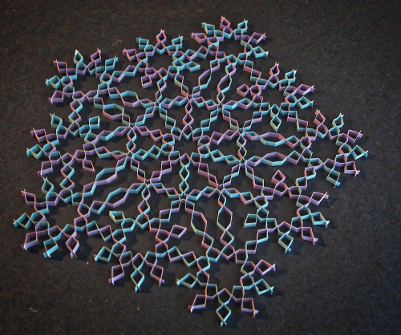
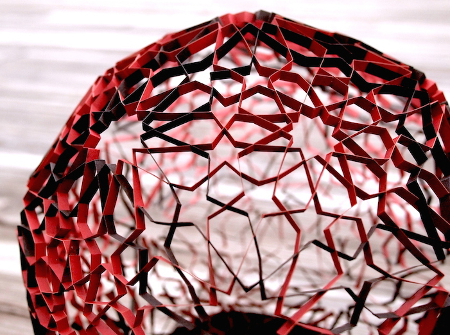
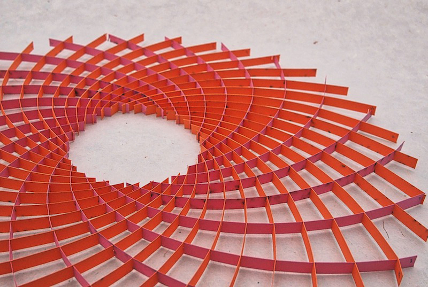
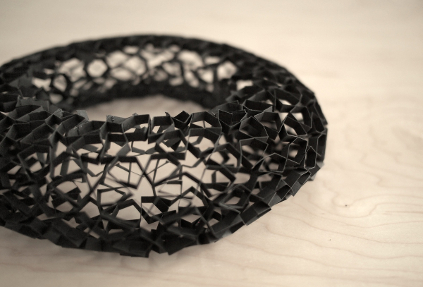
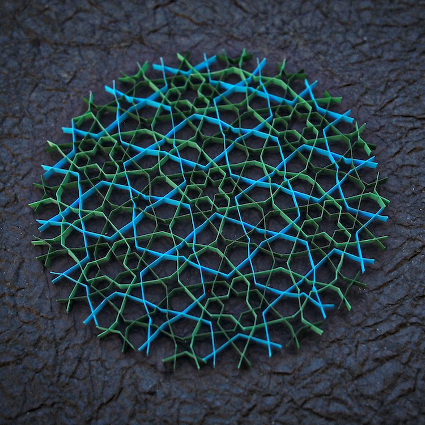
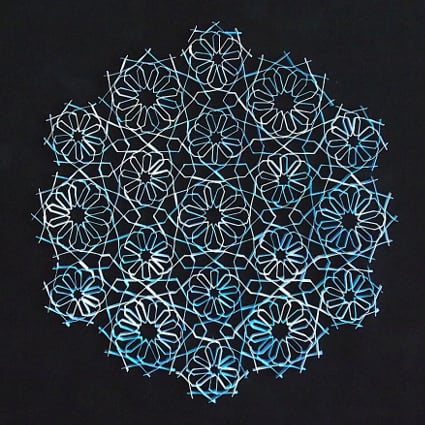
Moar sliceform pieces: Dendrite, Planetarium, Sunflower, Torus, Undergrowth, Vineyard. As you can see, coming up with names is the best part.
I try to do something different with each model, whether that’s making 3D surfaces (Planetarium and Torus), playing with logarithmic spirals (Sunflower) or different wallpaper symmetry groups (everything else). Girih I and Dendrite also deserve special mention because they are derived from girih tiles, a set of tiles known in Islamic architecture to produce 5-fold quasiperiodic patterns. If you ever thought Penrose tiles were cool, well, Islamic artists got there centuries earlier. :)
Like in high school, I was happy to receive course credit for something I would have built in my bedroom anyway. The difference this time was that I also co-authored a paper on this system with my advisor, and travelled to the Bridges conference in Baltimore last summer to present this research!
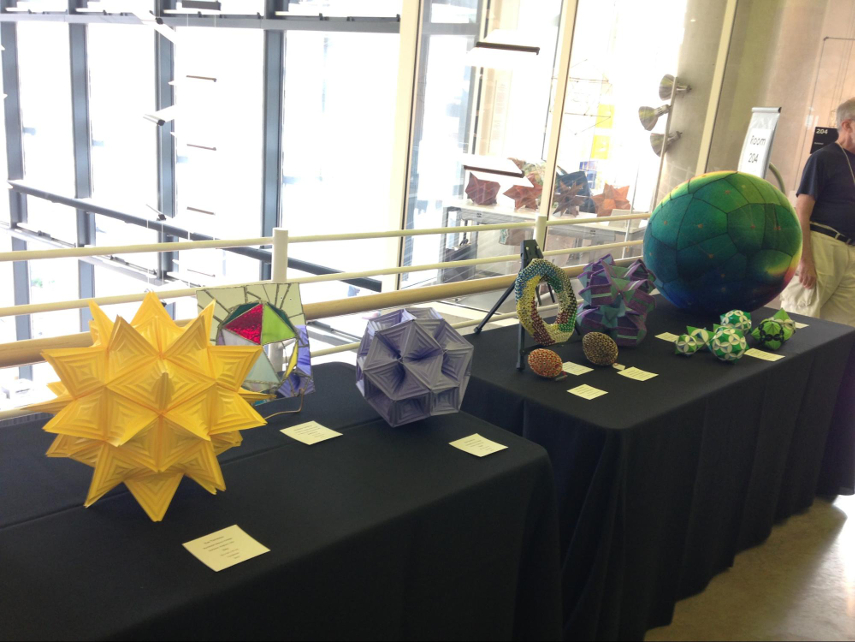
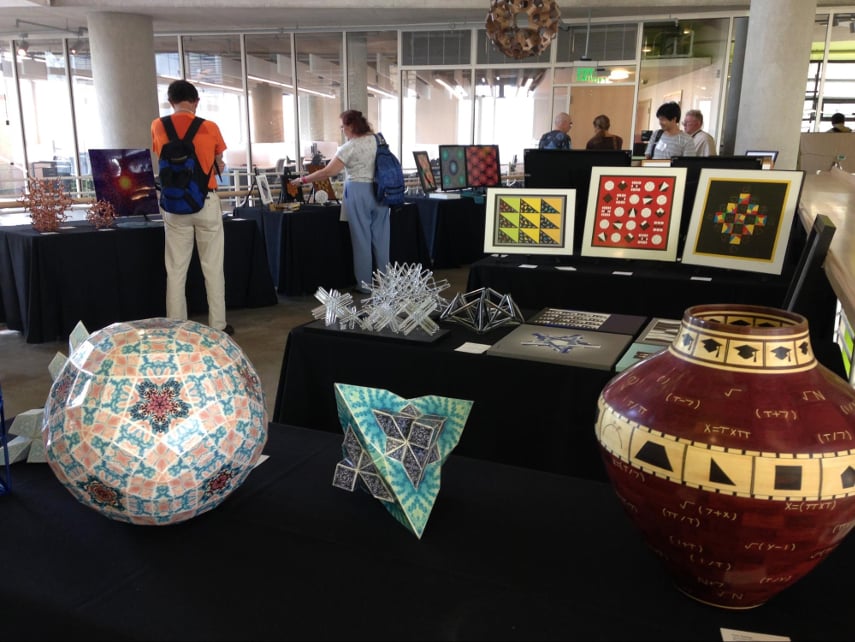
Lots and lots of amazing math art on display at the Bridges conference!
More recently, I had the opportunity to exhibit closer to home—specifically, just across the street! The MIT Museum put up the MoSAIC Festival in December, and the museum kindly gave me a table to display my sliceform pieces.
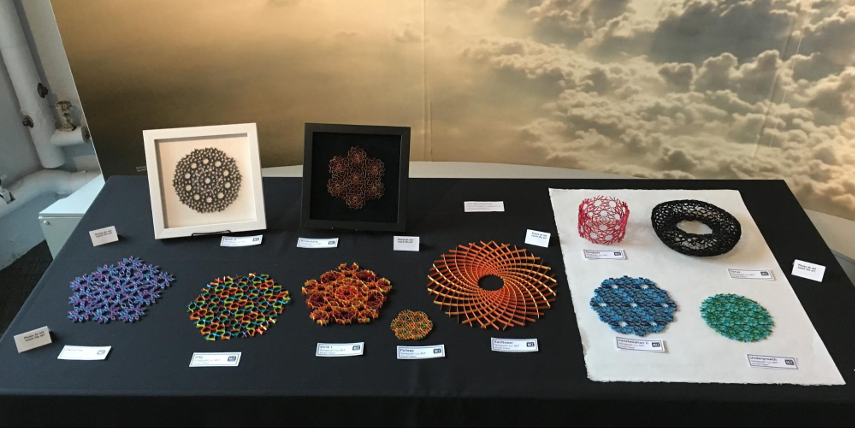
My exhibition at the MoSAIC festival!
Upstairs, my friend and fellow math artist Zach A. G’ had his own display. His art is of a different flavor—he specializes in using everyday objects like binder clips and paper clips to create gorgeous geometric sculptures. Here’s a sampling of his past work:
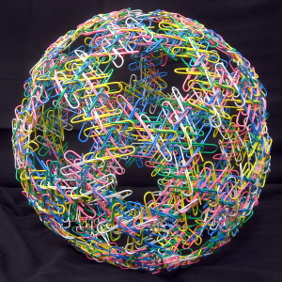
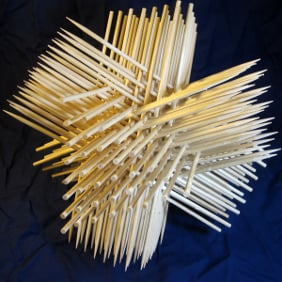
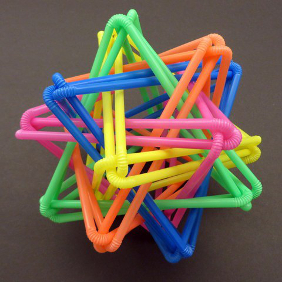
Zach A. G’s pieces Total Eclipse, Triskewers and Straws Thingy, made from paper clips, skewers and drinking straws respectively. Picture credit: Zach.
At MoSAIC, he had outdone himself by making an incredible sculpture out of more than four thousand binder clips and two thousand pennies!
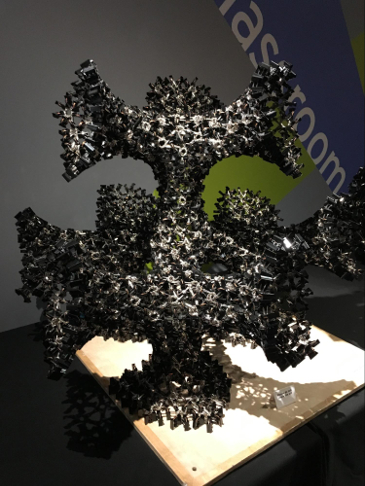
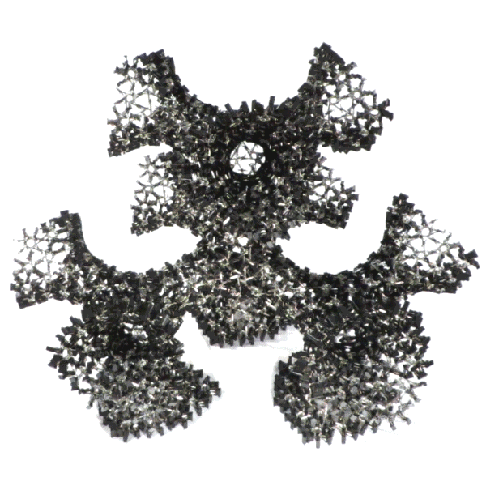
The appropriately named Penny Pincher, exhibited at the MIT Museum by Zach A. G’.
Be sure to click on the links to his works above! Zach is a terrific explainer, and goes into lots of detail about the underlying structure and math behind his sculptures.
It’s hard sometimes to stay creative and productive in your artwork with everything else taking place (oh right, I have classes and psets too…). Those can be pretty exciting as well—I spent most of break flip-flopping between various class schedules for the spring, and I haven’t made up my mind yet. I don’t know what’s in store for my final semester at MIT, but if I were to hazard a guess, there will be lots of paper art and pretty pictures involved!
Thanks for having me, Lydia! Follow my future paper art adventures on Flickr, Facebook and Instagram.
